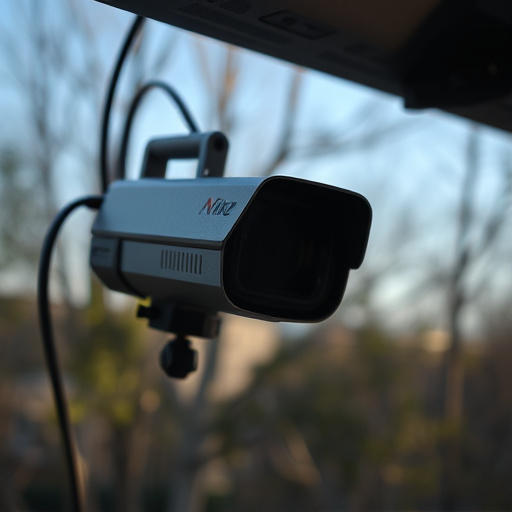Undetectable wireless security cameras use radio frequency (RF) signals to transmit video secretly. To counter these privacy risks, specialized RF detector tools scan for specific camera frequencies, enabling location and identification of hidden devices like smoke detectors or power outlets disguised as cameras, thereby enhancing privacy and security in homes and businesses.
Hidden cameras have evolved, with many now using radio frequency (RF) signals for operation, making them harder to detect. This tutorial guides you through a comprehensive RF detector sweep process to uncover even the most sophisticated hidden security cameras. We’ll explore the science behind RF signals and their role in camera technology, identify common frequencies used by wireless cameras, and introduce essential tools for your detection arsenal. Learn strategies to unmask undetectable wireless security cams and master the art of RF detection.
- Understanding RF Signals and Hidden Cameras
- Detecting Wireless Security Camera Frequencies
- Tools for RF Detector Sweep
- Uncovering Undetectable Wireless Cams Effectively
Understanding RF Signals and Hidden Cameras
Hidden cameras, often employed for surveillance or security purposes, utilize wireless technology to transmit footage secretly. One such method involves the use of Radio Frequency (RF) signals, which can carry video data discreetly and undetectably. Understanding RF signals is crucial in detecting these hidden devices.
RF signals are electromagnetic waves that carry information over long distances. In the context of undetectable wireless security cameras, they enable the transmission of video feeds from the camera to a receiver or monitoring system without conventional wire connections. This makes them nearly invisible and hard to trace, making it essential for users to be aware of their presence and implement countermeasures.
Detecting Wireless Security Camera Frequencies
Undetectable wireless security cameras have become a growing concern for privacy advocates and law enforcement alike, as they operate in the radio frequency (RF) spectrum, often on frequencies that are difficult to detect. These cameras can be hidden in everyday objects, such as plants, light fixtures, or even clock radios, making them nearly invisible to the naked eye.
To counteract this, RF detector sweeps have emerged as a powerful tool. By using specialized equipment to scan for radio signals, individuals and professionals can uncover these hidden devices. The process involves tuning into specific frequency ranges commonly used by wireless security cameras, allowing users to identify and locate the undetectable wireless security cameras. Understanding the frequencies these cameras operate on is crucial in ensuring comprehensive coverage during a sweep, thereby helping to maintain privacy and security in both residential and commercial settings.
Tools for RF Detector Sweep
When it comes to detecting undetectable wireless security cameras, the RF (Radio Frequency) detector sweep is a powerful tool. These devices are designed to uncover hidden cameras by identifying and analyzing the radio signals they emit. To effectively perform an RF detector sweep, several specialized tools are essential.
Firstly, you’ll need a high-quality RF detector capable of picking up weak signals. Look for models that offer broad frequency coverage to ensure you can detect a wide range of wireless camera transmissions. Additionally, a signal meter or oscilloscope can help visualize and measure the detected signals, making it easier to pinpoint the source. Antennas play a crucial role as well; a directional antenna can focus the detector’s sensitivity on specific areas, enhancing the chances of detecting hidden cameras with minimal interference from other devices.
Uncovering Undetectable Wireless Cams Effectively
Undetecting hidden, undetectable wireless security cameras has become a critical skill in today’s digital age. These tiny devices can be almost invisible to the naked eye, often disguised as everyday objects like smoke detectors or power outlets. However, with the right tools and techniques, it is possible to uncover these covert surveillances.
One effective method involves using RF (Radio Frequency) detector sweeps. These advanced gadgets can pinpoint wireless signals from hidden cameras, which emit unique frequencies. By sweeping through potentially suspicious areas, you can detect any unusual RF emissions, revealing the presence of undetectable wireless security cameras and helping to maintain a sense of privacy in your personal or professional spaces.
In conclusion, mastering an RF detector sweep is a powerful tool in uncovering hidden cameras, even those that attempt to remain undetectable. By understanding wireless security camera frequencies and utilizing specialized tools, one can effectively navigate the landscape of privacy protection. This tutorial equips readers with the knowledge to identify and mitigate potential surveillance risks, ensuring a safer digital environment in today’s connected world.
